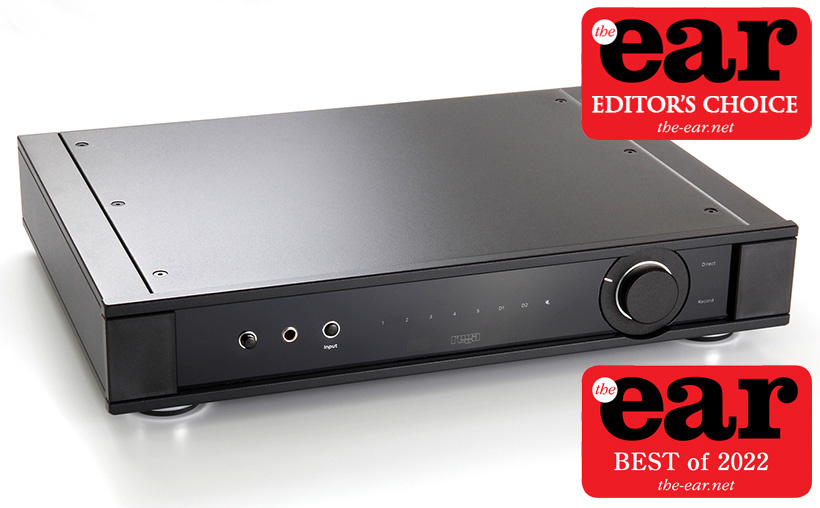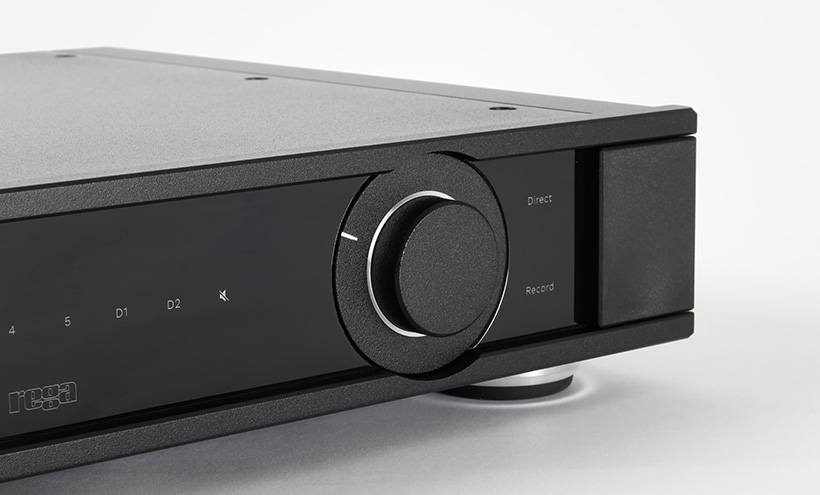Rega Elicit Mk5
Long before the Elicit Mk5 I was running an all Rega system at home, and was very happy with it indeed. At its heart was the Brio-R integrated amplifier, which offered, if I recall correctly, 50 watts of output into an eight Ohm load, and which sounded fine in our modest 14’x12’ room. It was paired with a pair of the then-current R3 floor standing loudspeakers, an RP3 turntable and a Saturn CD player. We were pretty cash-strapped at the time and I thought this system was fantastic value for money, with a sound that belied its relatively modest purchase price. Then in 2013 Rega announced the Elicit-R amplifier and when funds allowed I upgraded to that model. It was an absolute powerhouse compared with the Brio and took my listening pleasure up several levels. I then went to work for a retailer who did not have Rega in their product portfolio and suggested that I should use a system that was available in our shop. So with some reluctance, I parted with the Elicit, now seven years on Rega have brought the Elicit Mk5 to market.
The new version looks very similar to the old, which means that it is understated in the Rega house style. A matt black, full width but slender cabinet has a front panel with an on/off button, full size headphone socket, input selector on the left, inputs numbered one to five and D1 and D2 (spoiler alert) with small a LED indicating which one is in use, and with a large volume control on the right. The Rega logo lights up in red when the power is switched on. The differences between this new version and mine a decade ago are much more apparent on the rear panel.
There are two major differences between the Mk5 and its predecessor. One was hinted at on the front panel, with D1 and D2 representing an optical and a coaxial input into the onboard DAC. Rega has implemented a Wolfson DAC connected to a Wolfson S/PDIF receiver to handle most digital sources. I asked Rega why they had not included a USB input and their answer was very straightforward: cost and usability.
The other new feature is a moving magnet phono stage, which takes up input 1 on the analogue side, and has the obligatory earthing post for turntable connection. As I was hosting a guest turntable fitted with a moving coil cartridge during the review period I was unable to test this new feature. However, given Rega’s long and distinguished turntable and cartridge pedigree I have every confidence that this will be a more than adequate element.
All the analogue inputs are via RCA sockets, along with record in and out options and the ability to bypass the preamplifier and use an alternative external preamp or home cinema processor. It would have be a very impressive preamplifier to surpass the performance of the one built in to the MkV as this is derived from the unit used in the more expensive and very well regarded Aethos integrated amplifier, using the same FET circuit. The volume control is an Alps potentiometer. The rear panel is completed with two pairs of good quality binding posts for loudspeaker connection and an IEC power inlet socket. The power amplifier itself is the same as in the original Elicit, which is a good thing, based on the principle of ‘if it ain’t broke don’t fix it’. Power output is rated at 105 watts per channel into eight Ohms, rising to 162 watts per channel into four Ohms. The manual warns that the use of four Ohm speakers may cause the amplifier to run hotter than usual. In the unlikely event of overheating, a thermal cut-out will activate to protect the circuitry against damage. The overall build quality is up to Rega’s usual high standards, and it feels reassuringly hefty when it emerges from its packaging.
For the review I connected my Gold Note PH10 phono stage to input 2, my Yamaha CD-S3000 to input 3, my television to the optical input and the Auralic Aries Mini streamer to the coaxial input. I used Harbeth C7ES3XD loudspeakers, which are a pretty steady six Ohm load across the board. The supplied remote control is the Rega Solaris, which will also control any of Rega’s other devices, such as the Saturn CD player.
Listening to the Elicit Mk5
I started my first listening session streaming some albums from my ‘Favourites’ in Qobuz via the coaxial input on the DAC, starting with the 192Khz/24bit version of Pink Floyd’s Meddle. This of course opens with the rhythmic and slightly sinister One Of These days, which is dominated by Roger Waters’ very powerful bass guitar riff. From the first few bars, and with the volume advanced beyond what would normally be domestically acceptable, I was pinned to my chair. For a recording made over half a century ago this sounded intoxicatingly realistic, and having intended to play just that one track the next thing I know is the fading out of the last track Echoes. Rega have combined musicality with a real sense of propulsion in the new Elicit Mk5, which may turn short listening sessions into much longer ones. You have been warned.
Some audiophiles claim to have the ability to retain detailed memories of the sound of different components over long periods of time, but I am not one of them. However, listening to the Elicit Mk5 I was reminded of how much I had enjoyed its predecessor in my own system, and how much I had missed it after it had gone. This is not a device that shouts “look at me”, it simply goes about its business efficiently and well, day in and day out.
During the review period I used all of the sources which I had connected to the Elicit Mk5 and it never failed to deliver, whether it was spoken word material from the television, film soundtracks or SACD from the Yamaha. The source I enjoyed most though was the analogue replay through my PH10, which was connected to a highly modified Linn Sondek LP12 fitted with my own Dynavector XX-2 cartridge. It should not be a surprise that analogue sounds good through a Rega amplifier, but this was more than good. The same Pink Floyd album played through this medium took on even more life, with even more of that sensation of being in the studio with the band.
I concentrated on vinyl replay most days thereafter, and whether I was listening to jazz, rock, folk or classical, the Elicit Mk5 delivered an absorbing musical experience. Mozart’s Requiem, recorded for the Linn label by the Dunedin Consort under the direction of John Butt, was majestic. The choral passages carried real emotional weight and the solo voices were etched very clearly in the musical lansdscape.
Rega Elicit Mk5 conclusion
I do not envy a newcomer to the bewildering word of hi-fi, trying to cut through the cacophony of opinion, reviews, brands, sales spin and choice to make a buying decision. It is small wonder that the market for all-in-one solutions is growing. At £2,000 here in the UK, the Rega Elicit Mk5 is by no means inexpensive but given the array of features on offer as well as the outstanding sound quality it should serve as the hub of an excellent system. I was sorry to see it go. Highly recommended.






